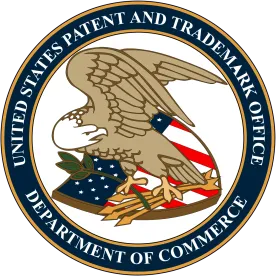Generative Artificial Intelligence is a type of artificial intelligence (AI) that can generate a wide range of content types in response to user prompts. Examples of such content can include text, images, audio and video content, etc. There has been pervasive use of Generative AI over the past few months, to create essays, works of art, music, and even source code for computer programs, as well as to take standardized examinations such as the LSAT, classroom exams, and even bar exams. OpenAI’s ChatGPT and Google Bard are the most recent prominent Generative AI entries.
To evaluate the capabilities of Generative AI, we selected the USPTO’s recent announcement about grants of digital patents as a topic, and compared a blog that we prepared and a blog that Generative AI (here, Google Bard) prepared. The resulting blogs, and our commentary on them, follow.
Our Content
On April 18, 2023, the United States Patent and Trademark Office (USPTO) will transition away from sending paper patents, to an electronic patent grant (eGrant) system for all patent types (Utility, Design, Plant, and Reissue). This new eGrant process will deliver official issued patents to patent owners in a secure electronic portable digital format (PDF). The eGrant patent will “[m]irror the appearance of the currently produced bound patent grants” and “[u]se an encrypted certification/validation technology.” Patent owners will receive their eGrant patents from the USPTO’s online Patent Center on the day of issuance and will be able to print unlimited free copies of eGrant patents from USPTO’s online Patent Center. A sample of this new eGrant patent is available here. Additional documents, including Certificates of Correction and Reexamination Certificates, will not be issued electronically at this time.
The USPTO has suggested that this new eGrant process will reduce patent pendency by shortening the time between issue fee payment and patent issuance. The shortened window between the mailing of the issue notification and the issuing of an eGrant patent will reduce the amount of time for applicants to file continuing applications, making it more difficult to wait until after issue fee payment to file such applications. Accordingly, applicants should consider filing applicable continuing applications no later than the payment of the issue fee.
In replying to comments published in the Federal Register as part of the USPTO’s notice of final rulemaking, the Office noted that continuation applications must be filed ‘‘before the patenting or abandonment or termination of proceedings on the first application.’’ 35 U.S.C. § 120. The Federal Circuit has interpreted this requirement to mean that the continuing application is co-pending if it is filed on the same date or before the date the earlier filed application issues as a patent. The USPTO stated that the eGrant process will have no impact on the above interpretation of 35 U.S.C. § 120.
During an initial transition period, patent owners will receive both copies of the eGrant patent as the official statutory patent and a free bound paper version as a ceremonial copy. The ceremonial paper copy will be directed to the correspondence address of record and will indicate that it is a ceremonial copy of a patent that was officially issued in electronic form. After the transition period, the ceremonial paper copy will be available for purchase for a nominal fee, just as certified copies and presentation copies of granted patents are available now for an additional fee.
According to USPTO Commissioner Kathi Vidal, “By issuing eGrants, we’re making considerable strides toward more environmentally conscious operations at the USPTO. Providing 21st century service to our stakeholders means shifting our processes to reflect 21st century policies. The eGrant process not only minimizes paper waste, but it also benefits stakeholders by reducing pendency and streamlining the process. It’s a win-win for the agency and for our customers.”
From a patent practice perspective, the key takeaway for patent applicants is that they should decide, as soon as possible after receiving a notice of allowance, whether to file any continuing applications. Waiting too long could result in losing co-pendency of a continuing application, and thereby losing the benefit of the earlier filing date of the allowed application.
AI Content
We asked Google Bard to “write a 300 word blog on the USPTO’s transition to digital patents.” Bard produced the following output, after several drafts, which we were able to access.
The USPTO’s transition to digital patents is a major step forward for the agency and for the patent system as a whole. The new system will save time and money, improve efficiency, and make it easier for inventors to access their patents.
One of the biggest benefits of the new system is that it will save time. Currently, it can take several months for a patent to be issued after it is filed. The new system will allow patents to be issued much more quickly, in some cases within just a few weeks. This will be a huge benefit to inventors, who will be able to start using their patents sooner.
The new system will also save money. The USPTO currently spends millions of dollars each year on printing and mailing paper patents. The new system will eliminate these costs, saving the agency a significant amount of money.
In addition to saving time and money, the new system will also improve efficiency. The current system is paper-based, which means that it is slow and cumbersome to process. The new system will be electronic, which will make it much faster and easier to process patents. This will be a huge benefit to the USPTO, which is currently facing a backlog of patent applications.
Finally, the new system will make it easier for inventors to access their patents. Currently, inventors can only access their patents by going to the USPTO in person or by requesting a paper copy to be mailed to them. The new system will allow inventors to access their patents online, 24 hours a day, 7 days a week. This will be a huge benefit to inventors, who will be able to quickly and easily access their patents when they need them.
Overall, the USPTO’s transition to digital patents is a positive development that will benefit inventors, the USPTO, and the patent system as a whole. The new system will save time, money, improve efficiency, and make it easier for inventors to access their patents.
Comparison and Takeaways
It appears that Bard’s response uses materials from the USPTO website to produce a technically accurate blog. Bard, however, missed several practical items which are critical for patent applicants: 1) the launch date for eGrant patents; 2) the eGrant transition period; and, perhaps most importantly, 3) the reduced window for patent owners to file continuing applications while maintaining co-pendency with their allowed applications.
We also reviewed two other drafts that Bard generated. In the first draft, Bard identified the launch date of the eGrant patents; the process by which the e-Grant patents will be accessed; the eGrant transition period and certain benefits and challenges related to the access, security, and use of digital patents vs paper patents. In the second draft, Bard failed to identify the launch date of the eGrant patents but focused on the history of the USPTO’s efforts to launch digital patents; the accessibility of digital patents from other patent offices; the transition period of the eGrant patents; and certain USPTO benefits related to eGrant patents.
All three of Bard’s attempts missed at least one of the critical issues – the reduced continuation application filing window. Bard also “changed its mind” and omitted the first two critical items in the final draft.
From the foregoing, we can see that current generative AI can select facts but has difficulty determining which facts would be most relevant, and cannot extrapolate from the facts to identify issues of practical importance. Human intervention still is necessary.





 />i
/>i

